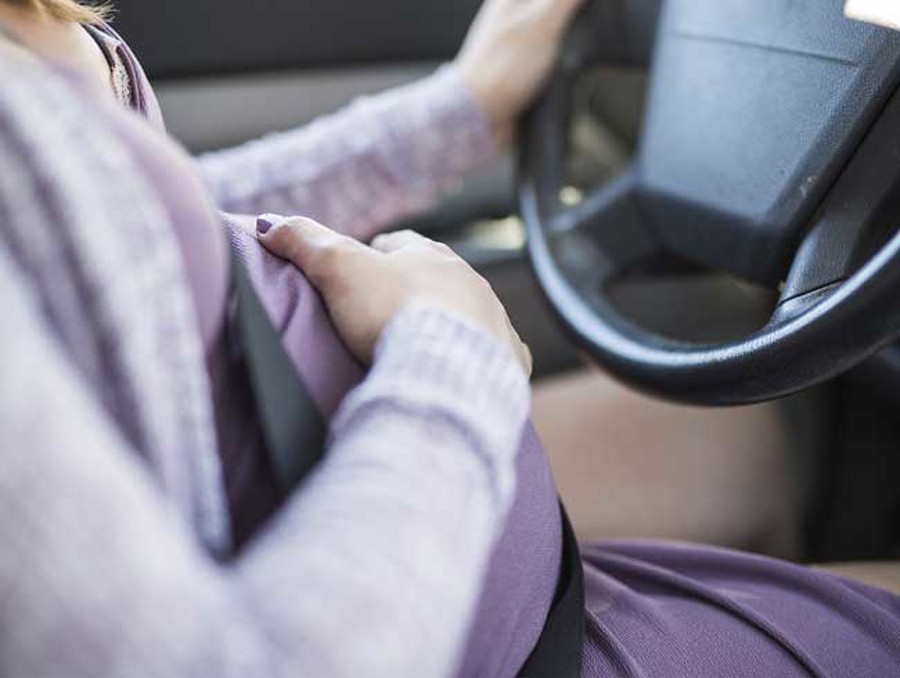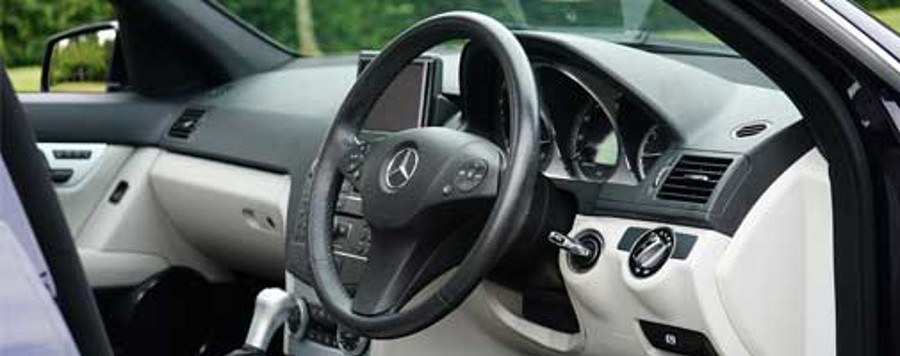Driving While Pregnant
A guide to give you more information on pregnancy and driving
A guide to driving while pregnant
Your car's an essential part of your life and most of us use ours daily, to get to work, to go shopping, to go to social events and much more.
When you find out you're pregnant there’s a lot for you to take in about your changing body and how you need to adapt your existing lifestyle to accommodate your new baby.
One area of concern for pregnant women is driving. In this guide, we hope to answer the questions you have about driving while pregnant and ensure you know how to remain safe and comfortable behind the wheel throughout your pregnancy.

A Guide to Driving While Pregnant
Your car's an essential part of your life and most of us use ours daily, to get to work, to go shopping, to go to social events and much more.
When you find out you're pregnant there’s a lot for you to take in about your changing body and how you need to adapt your existing lifestyle to accommodate your new baby.
One area of concern for pregnant women is driving. In this guide, we hope to answer the questions you have about driving while pregnant and ensure you know how to remain safe and comfortable behind the wheel throughout your pregnancy.
Is it safe to drive while pregnant?

The quick answer is yes, it’s completely safe and legal to drive while you’re pregnant, provided there's no medical reason for which your GP's advised you not to drive and you feel comfortable behind the wheel.
We know that morning sickness can make women feel tired and nauseated during the first trimester or throughout your pregnancy if you suffer from hyperemesis gravidarum, both of which can make it harder to concentrate for long periods of time. With this in mind, we recommend taking regular breaks on longer journeys and only drive when you're feeling well enough to do so. It’s recommended that you take your mobile phone with you when driving so that you can call for help if needed.
Do I have to wear a seatbelt when pregnant?
It's a legal requirement to wear a seatbelt when you're in a car, whether as a passenger or as a driver. If you aren't wearing your seatbelt you can be fined up to £500. This is still the case when you're pregnant and it's entirely safe to do so. Wearing a seatbelt correctly will help protect you and your baby from injury if you have to stop suddenly or are involved in an accident.
The correct way to wear your seatbelt is with the top part over your collarbone and between your breasts so that it rests against your shoulder rather than your neck. The lower part should lie across your thighs and hips beneath your bump not over it. When driving you should regularly check to make sure that the belt hasn't risen up onto your bump.
When travelling as a passenger you should always try to sit in a seat with a 3-point seatbelt rather than a lap-only belt. These belts have been shown to cause serious injuries to unborn babies if the car has to suddenly brake. If there's no other option then a lap belt's better than no seatbelt at all.
There's only one exception to this rule and that's where your doctor has deemed you to be medically exempt from wearing a seatbelt. If this is the case they'll provide you with a Certificate of Exemption from Compulsory Seatbelt Wearing.
This certificate will need to be kept in the vehicle at all times and provided to the police if you're stopped. You should also let your insurance provider know that your GP's provided you with this exemption.
Are airbags safe for pregnant women?
Airbags are safe for pregnant women and they'll help protect you and your baby if you're involved in an accident, as they spread out the force of the collision to minimise the impact for you both.
How to stay comfortable while driving
Sitting for long lengths of time can be difficult when you're pregnant so it’s important to try and make yourself as comfortable as possible when driving to minimise the distractions for you and allow you to fully focus on driving.
It’s important you sit correctly, making sure you sit with your back against the back of your seat and the steering wheel is within a comfortable reach. You should also be able to reach the pedals easily. If you're having back pain then it might be useful to put a small cushion behind your back.

As your bump grows you’ll probably need to adjust your seat from your usual driving position as well, giving you and your baby bump more room. You should make sure there's space between the steering wheel and your bump.
If you have an adjustable steering wheel you should also move this so that it's tilted towards your breastbone rather than your stomach.
You should try to dress comfortably, avoiding tight waistbands and strappy shoes that might dig into you whilst driving.
It’s important for you to stay hydrated when you’re pregnant so we recommend having a bottle of water to hand, even if you’re just going on a short journey.
Some healthy snacks like fruit or nuts are also good to take on longer journeys to keep your energy levels up.
You should also remember to take regular breaks as and when you need them. It’s recommended on particularly long journeys that even if you don’t feel like you need to, you take a break every half an hour or so to give your body a chance to stretch and so you can use the toilet and rehydrate.
Without giving yourself a break from driving, you might get swollen ankles or pregnancy cramps in your legs so we recommend using a break to do some simple stretches and where possible walk a little to prevent this.
When to stop driving while pregnant
It's entirely up to you when to stop driving during your pregnancy. Some women don’t feel comfortable driving at all during their pregnancy and others are comfortable driving until their due date.
Towards the end of your pregnancy you might find it difficult to get in and out of your car, depending on the height of the seat as well as getting comfortable behind the wheel.
If your bump gets too big to position yourself correctly behind the wheel, or you can’t fully reach and control the pedals, you shouldn't drive. Thick soled shoes or high heels may help you reach the pedals or sitting on a cushion to get into a more comfortable position but you should only continue to drive even using these methods, if you're in full control of the vehicle.
Some women suffer badly from fatigue, exhaustion and tiredness during their last trimester, all of which can affect your concentration and ability to drive. We recommend only driving for as long as you feel safe and comfortable to, and not getting behind the wheel when you're feeling tired.
As you near the end of your pregnancy, we recommend having your hospital bag and any necessary documents in the vehicle with you when you travel.
What to do if you have a car accident while pregnant
We’ve put together an in-depth piece on what to do in an accident to give you general advice on what to do if you're involved in an accident.

If you're pregnant and involved in a car accident, no matter how small it is and even if you feel fine, you should always see a doctor. A forceful jolt may cause complications that you're not initially aware of so it's best to have a thorough check by a medical professional.
In a severe accident, you'll likely be taken straight to the hospital from the scene. You should make sure you tell the emergency responders that you're pregnant and how far along you are in the pregnancy. If you have any contractions, pain or bleeding following an accident, you should seek medical help as soon as possible.
How soon after giving birth can I drive?
The time it takes to get back behind the wheel varies between women and there's no set time that you should be driving again by.
After a natural birth, it’s recommended new mothers rest for several days before returning to their normal daily activities and this includes driving but as soon as you're ready, drive again. However, we recommend starting with shorter journeys and waiting a couple of weeks before going on longer journeys.
After a caesarean, it'll normally take a few weeks until you feel well enough to resume activities like driving and doctors' advice is to wait 6 weeks.
If you're ever in any doubt over whether you're ready to start driving again you can check with your GP or midwife for their advice.
For more information on car seats click here to take a look at our extensive car seat guide or here for more information on keeping your children safe in the car.